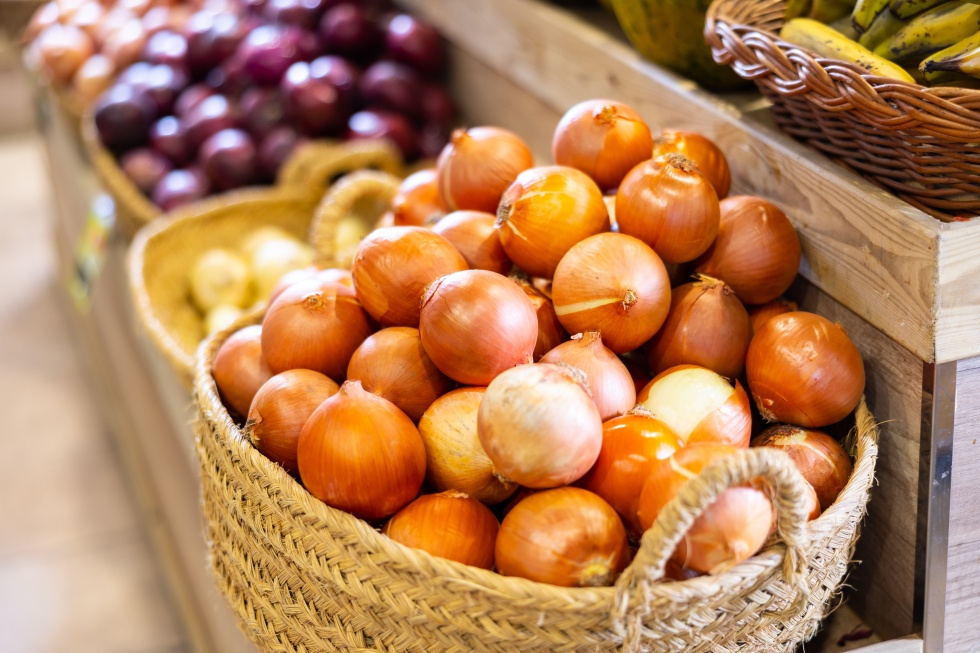Onion Import Panic: Farmers' Concerns in Lasalgaon
Explore the intricate world of onion import in India, diving into challenges, opportunities, and the pivotal role of SMEs. Delve into the future of global onion trade.

Delve into the intricacies of India's onion industry, a crucial player in global import-export dynamics. Despite being the world's second-largest onion producer, India faces challenges in balancing supply and demand, impacting farmers and consumers. Let's unravel the complexities surrounding "onion import-export."
The Onion Conundrum
In Indian households, onions are not just a vegetable; they are an integral part of the culinary identity. Beyond taste, onions hold political significance, making their cultivation a delicate balance between agriculture and socio-economic dynamics.
Significance in India
Onions, second only to potatoes, are indispensable in Indian cuisine. With a monthly consumption of 5 kg per household and comprising 13% of the vegetable bill, onions wield significant influence. However, their political sensitivity arises from the perception that they are a staple for the economically disadvantaged.
Price Volatility
Understanding the onion market requires navigating through the storm of price volatility. Climate sensitivity adds an unpredictable element, turning the onion trade into a delicate dance between abundance and scarcity.
The Onion Production Landscape
The onion production calendar resembles a symphony, with different regions contributing to the melody at various times. However, this orchestrated dance also introduces challenges in maintaining a stable market.
Seasonal Dynamics
India's onion production follows a seasonal wave, with distinct varieties entering the market at different times. The more perishable red onions dominate from August to February, succeeded by the longer-shelf-life pink onions from March to early May. The cyclicality of production contributes to market imbalances and price volatility.
Political Fallout
Political consequences are woven into the fabric of onion farming. The aftermath of the 1998 crisis echoes in policy decisions, creating a delicate relationship between political stability and onion prices.
Oversupply and Global Impact
Oversupply, paradoxically, leads to distress. The global impact highlights the interconnectedness of markets, emphasizing the need for resilient supply chains.
The Current Quandary
Current challenges stem from oversupply due to a bumper crop, exacerbated by reduced global demand. Major importing countries like Sri Lanka, Bangladesh, and Pakistan scaled down imports, plunging Indian farmers into a crisis. The discontinuation of essential services like the 'Kisan Rail' due to coal shortages further crippled farmers' access to markets.
Farmer Struggles
Farmers' struggles extend beyond the fields. Understanding their challenges is pivotal in devising sustainable solutions that benefit both producers and consumers.
Export policies play a crucial role in shaping the destiny of India's onions on the global stage. Stability and reliability are the keys to building lasting partnerships.
Moving Forward
For SMEs, the onion conundrum presents opportunities for innovation and service. Technological solutions, consultancy services, and storage innovations can redefine the onion trade.
Opportunities for SMEs
- Technological Integration: SMEs can play a crucial role in developing technology-driven solutions for efficient supply chain management, reducing post-harvest losses.
- Export Consultancy: SMEs can provide consultancy services to farmers, guiding them through export regulations, documentation, and market trends.
- Storage Solutions: Developing affordable and sustainable storage solutions can aid in prolonging the shelf life of onions, addressing post-harvest losses.
Predictions
As we gaze into the future, diversification, policy reforms, and technological adaptations emerge as beacons of change. Adapting to climate challenges becomes imperative for sustained growth.
Future Trends
- Diversification of Export Markets: India may explore untapped markets, reducing dependence on a few countries and mitigating the impact of geopolitical events.
- Policy Reforms: Anticipate a shift towards stable, farmer-friendly export policies, fostering trust among global partners.
- Climate-Resilient Varieties: With climate change concerns, there could be a push towards developing onion varieties resilient to extreme weather conditions.
Conclusion
The perennial onion crisis in Lasalgaon underscores the systemic issues ingrained in India's agricultural landscape. To truly savor the pyaaz on our plates, a holistic approach, encompassing policy reforms and global market integration, is the need of the hour. SMEs have a pivotal role in transforming challenges into opportunities, fostering innovation and sustainability. As we navigate the future of onion trade, let's envision a landscape where farmers thrive, consumers benefit, and SMEs drive positive change. Explore these opportunities on Export Portal, fostering a collaborative and resilient global trade community.






Comments 0